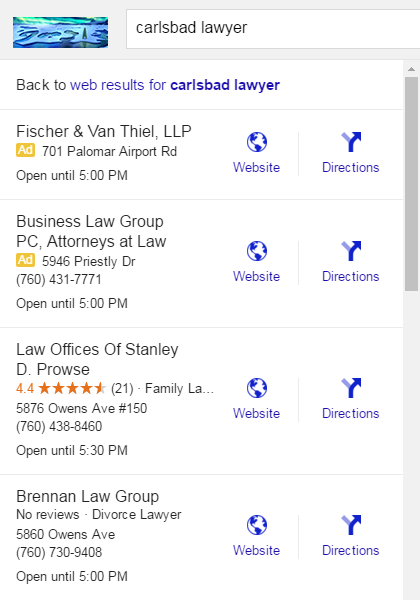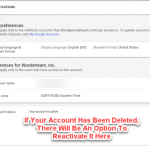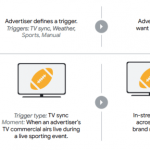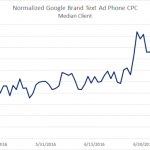Google Shakes Things Up with 2 Local Advertising Updates
May 10, 2016
Have you seen the two recent changes to Google local advertising?
- Ads in the Local Finder results after clicking “More places.”
- Google Maps is no longer a Search Partner
In both changes, Google has expressed the importance of Local Extensions in Google AdWords. And both can have an impact on your impressions and clicks. Here’s what’s new.

Google local advertising is now showing up in the local finder. Using location extensions, users will be able to find nearby businesses after clicking “More places.”
Local Advertising in the Google Local Finder
Ads can now show in the Local Finder results. They won’t show in the Local 3 Pack, but if you click “More places” it’s possible you’ll see an ad there. Here’s a screenshot of a local ad showing up for “Carlsbad lawyer”:

The new local ads are located above the regular local results with a yellow “Ad” label.
Local finder ads use location extensions, which can show business addresses and phone numbers. One thing worth mentioning is that the local finder ads don’t get a pin on the Maps results, as shown here:

So far, the only difference between the natural local results and local advertising is that the ads don’t get a pin on the map.
For retailers and service providers with a brick and mortar location who aren’t in the Local 3 Pack, local advertising showing up in the Local Finder is good news. You have another chance at getting in the local results, but only if users click “More places.”
Thus continues the trend of more ads everywhere, all the time.
Google Maps to Only show Ads that Use Location Extensions
Google has begun sending notices to advertisers that Google Maps is no longer a search partner. Instead, Google now considers Maps “a core Google search site.”
As a result, Google Maps will now require location extensions for ads to show up. So standard text ads won’t show anymore.
Also, if you had opted out of Search Partners but still use location extensions, you’ll be able to see your ads in Maps. And if you opted in to Search Partners but aren’t using location extensions, you won’t see your ads.
What this means is that more businesses will join the pool of ad auctions for Google Maps. More competition may drive costs higher, but we’ll see just how embattled this becomes.
The Takeaway: Use Location Extensions!
Both of the updates rely on location extensions to show your ads, both in the local finder and in Maps. The more information you have about your business, the better it is for users. Google wants that reflected in the results.
Google expressed the importance of location extensions in the notice they sent to advertisers. They say if you are using location extensions, you could see an increase in impressions and clicks. By this same logic, if you don’t use location extensions, you could see a decrease in performance.
The answer is pretty clear here: straighten out your location extensions if you want your ads to show.
We all know how much Google likes experimenting to see if a feature will be useful to users, like mobile click-to-call. However, if they stick, these latest changes can have a significant impact on local advertisers.
Since Google has already sent notices to AdWords advertisers, the second ad update will probably stick around. After all, they’re trying to “create a more seamless, relevant ad experience on Google Maps.”
As for ads in the local finder, who knows? The way Google has been approaching things, the ads probably aren’t going anywhere.
Digital & Social Articles on Business 2 Community
(23)













